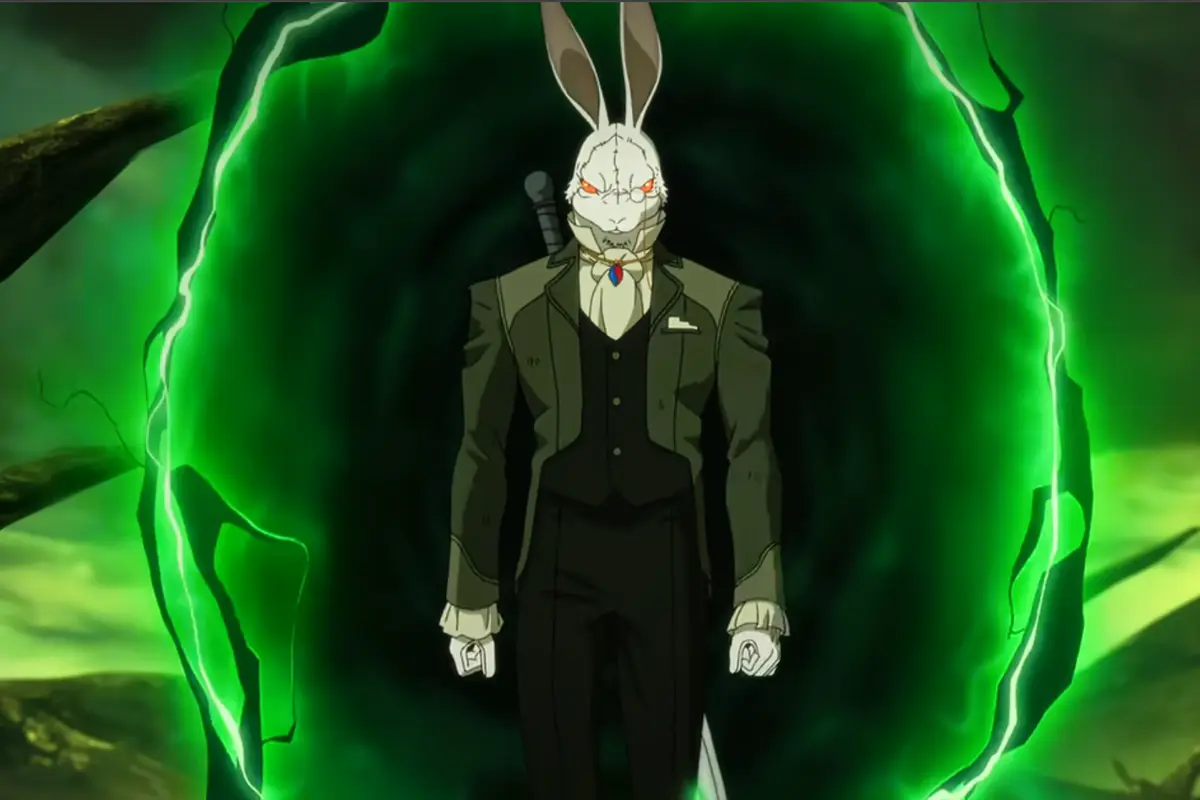Summary:
- Netflix’s Devil May Cry villain White Rabbit mirrors Stranger Things‘ Vecna in origin and intent.
- Both characters began as humans and were transformed by supernatural realms into agents of chaos.
- The show reimagines White Rabbit from his original demonic role into a tragic human antagonist.
Netflix’s new animated adaptation of Devil May Cry reintroduces fans to Dante, the stylish demon slayer. But what really stands out is its central antagonist, White Rabbit, whose backstory shares a surprisingly similar structure with Vecna from Stranger Things. Though not a direct crossover, the thematic overlap between these Netflix villains adds a compelling layer to the show’s narrative.
How Does Devil May Cry’s White Rabbit Compare to Stranger Things’ Vecna?

The biggest surprise in Devil May Cry comes from how White Rabbit is reimagined. Unlike his original appearance in the Devil May Cry 3 manga, where he was a demon, the Netflix series presents White Rabbit as a human corrupted by the Demon World (Makai). This twist places him in a unique position, especially when compared to Vecna from Stranger Things.
Vecna, originally Henry Creel, was a human who entered the Upside Down, where he was reshaped into a monstrous force. Similarly, White Rabbit stumbled into Makai and was changed by its environment and betrayal by humanity. In both cases, we see humans becoming villains due to exposure to otherworldly dimensions. This transformation serves as a central driving force behind their motivations: Vecna wants to collapse dimensions, while White Rabbit seeks to merge the human and demon realms.
READ MORE: Stunning Argentina Locations in Caught on Netflix – Where Was It Filmed?
What Is White Rabbit’s Backstory in Netflix’s Devil May Cry?

In Episode 6 of Devil May Cry, White Rabbit‘s origin is revealed in flashbacks. He wasn’t born a demon, but a human who somehow entered the Demon World. There, he tried to help the demon inhabitants survive the harsh realm. However, his efforts failed due to interference from the human world.
This failure breaks him mentally and emotionally. Feeling betrayed, he adopts a radical goal: unifying the demon and human realms, believing both are equally broken. It’s this emotional weight and history that sets him apart from standard villains. His descent into darkness is not simply born out of malice, but disillusionment.
In contrast to Vecna, whose villainy stems from a long-standing psychological disturbance, White Rabbit was initially empathetic. His evolution into an antagonist is more tragic, rooted in failed hope rather than inherent evil.
READ MORE: Why Can’t the Yellowjackets Escape the Wilderness? Natalie’s Return Explained
How Does the Netflix Series Reimagine White Rabbit from the Games?

White Rabbit first appeared in the Devil May Cry 3 manga, where he was a manipulative demon. He hired Dante to rescue a girl named Alice, only to reveal it was all a ruse to test the son of Sparda. This version of White Rabbit was a one-dimensional trickster who set events into motion but lacked any meaningful depth.
The Netflix adaptation flips this entirely. The show introduces him as a tragic figure with a personal vendetta and a layered history. This reinvention not only adds depth to the character but also enhances the storytelling of Devil May Cry. It gives Dante a more complex adversary and introduces themes of identity, loss, and moral conflict.
Additionally, the show links White Rabbit to the larger plot involving Dante’s brother, Vergil. In the original games, White Rabbit was the one who told Dante that Vergil was still alive. The new series hints at this connection too, tying White Rabbit to the events that ultimately lead to Vergil’s reappearance as Nelo Angelo.
READ MORE: The Life List: What Are All the Items on Alex’s Life List?
Why Does This Stranger Things-Like Twist Matter?
The similarities between White Rabbit and Vecna highlight a recurring storytelling technique: the corruption of humanity through supernatural exposure. For Netflix, it’s a narrative formula that resonates. It makes the villain more than just an obstacle; it makes them a reflection of the hero’s potential downfall.
In Devil May Cry, this is important because it forces Dante—a half-demon himself—to confront what he could become if he allowed bitterness to rule him. It’s a mirrored struggle that deepens the emotional stakes. The visual storytelling in Episode 6, handled by Studio La Cachette, reinforces this emotional gravity through haunting, surreal sequences.
Unlike Vecna, whose evil was always latent, White Rabbit is a cautionary tale—a man who became what he fought against. This thematic link with Stranger Things adds an unexpected layer of emotional resonance to Devil May Cry‘s story.
Additional Details
Devil May Cry premiered on Netflix on April 3, 2025. The series is directed by Adi Shankar and animated by Studio Mir and Studio La Cachette. All eight episodes are currently streaming exclusively on Netflix.
Stay updated with the Latest News and Stories, follow us on our social media platforms.
You can follow us on:
Stay Connected!! Join our Whatsapp Channel
















